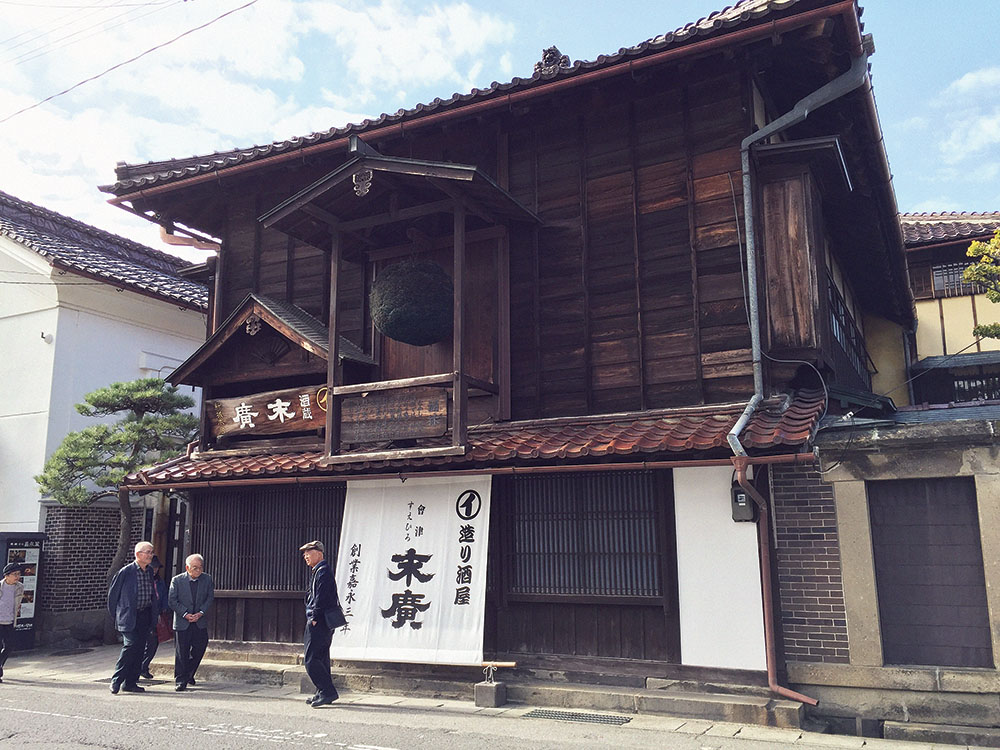
Suehiro Kaei酒廠。/Suehiro’s Kaei Brewery
攝影及撰文 (英文)/Photographs and English : Johannes Pong
翻譯/Translation : Derek Leung
某天告訴朋友即將去參觀福島的傳統清酒釀造廠,回應竟然都是震驚與憂慮,然後更開玩笑說我會長出第三隻眼睛和增生一些手腳,並建議我穿鉛質內衣保護自己…
福島地震、海嘯和第一核電廠事故發生以後,實在傳聞誤報謊言滿天飛,唯恐天下不亂。可是,輻射其實是很容易通過科學方法檢測出來,所以是無法掩飾或誇大其詞的。
後來在iPhone下載了Lapka輻射偵測程式,並從有輕微強迫症的居港法國朋友借來別緻的Lapka PEM設備準備一併使用。最近被Airbnb收購的Lapka是一個可連接到智能手機的細小環境監測器,其精確的傳感器會對世上肉眼看不到的離子和分子有所感應,當中一個程式就是可以測量和分析緊貼我們周遭環境的基本輻射水平。因為我那朋友認為第一核電站的災難會令整個亞洲瀰漫致命的輻射,所以他買下那小器具以作傍身之用實在無可厚非。
就是這樣,我出發日本前,便在港到處測試Lapka設備的功能。令人相當沮喪的是文華東方酒店地庫酒吧的基本輻射水平比首都東京還要高,而順便一提的是東京的輻射水平竟又較福島高。
到達福島時,Lapka證實我身旁四周都沒有放射性物質。當然,核燃料棒正在溶解的第一核電廠附近範圍是個例外:沿海地區確實有待從遽變中復甦過來,而有關的漁業亦暫告中止。說實在,福島土地遼闊,當中三個地質區域各有不同,而氣候、文化和語言亦有天壤之別。
我探測到在福島縣內最大的城市郡山市,會津若松鎮和喜多方地區農場的背景輻射程度只有0.17,持續較香港地區的0.20-0.21為低。說實話,香港、上海和東京這樣的大都會全因花崗岩和混凝土建築物太多而令輻射聚結不散,含量較福島郊區還多實在不足為奇。
會津若松連接喜多方的地區就是那肥沃的水稻盤地。海邊的重災區與會津若松連接喜多方地區被郡山山區隔住,距離仿如東京遠離富士山一樣。那福島會津若松的人可吃刺身嗎?傳統會津若松那兒從不多吃魚生或海鮮,與近畿京都的習慣相似。會津若松當地的刺身反而是生馬肉伴辛口味噌,或者像京都同樣吃一種軟軟的腐竹腐皮,即素食版「湯葉」。有些菜式會用上干貝帶出鮮味,與廣東的粵菜不遑多讓。
某晚坐新幹線上行前,查問了東京外國記者俱樂部的數位新聞記者,曾到過福島的都對該縣讚不絕口。然而很多時候,有關福島的資訊發布都牽涉政治問題,這與其他任何小鎮沒有異樣。
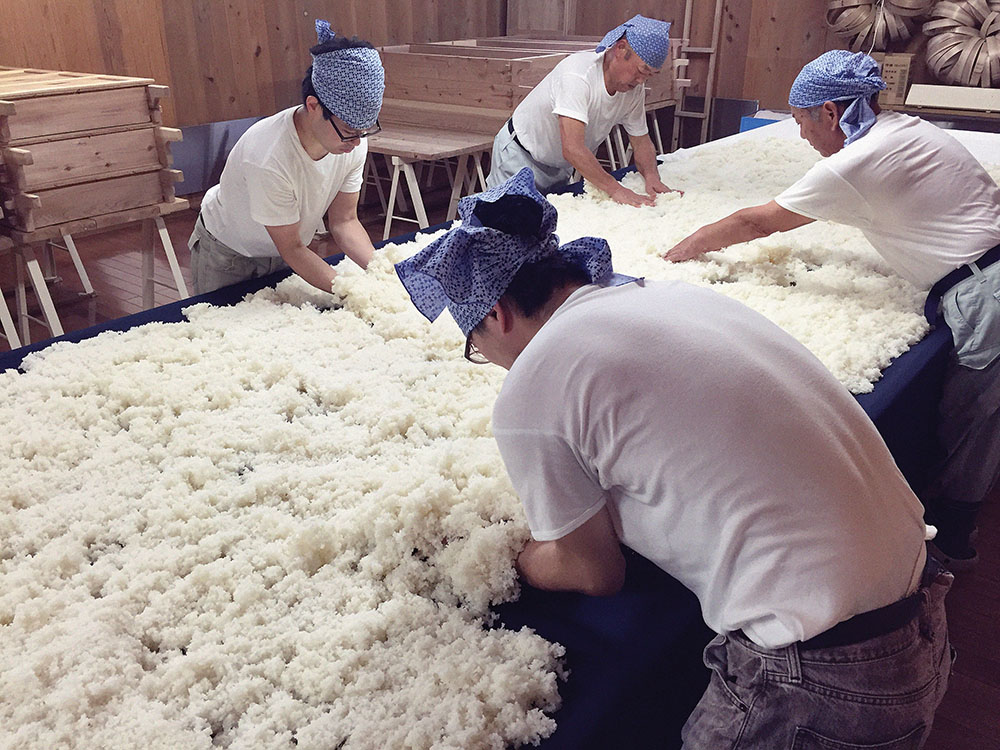
在Daishichi酒廠準備著做清酒的米。/Prepping the sake rice at Daishichi Brewery
參觀的第一家釀酒廠是位於福島田村市 (名雖為市卻更像村落—巴士服務只到晚上6點) 的仁井田本家,成立於1711年,由品牌的第十八代傳人仁井田穩彦釀酒大師主理。他和22名員工負責種植和收割水稻,以及整個清酒製作過程,並對自己的手工清酒製作非常自豪。
一入釀酒廠,便看見一位年輕的工作人員仔細地在米粒上灑上麴菌。那麴菌是日本的「國菌」- 不同的菌株創造出上至醬油、味噌下至酒精的味道。如斯重複沉思的動作可能啟發禪宗細沙「枯山水」庭園的設計,原因是日本的廟宇以往是自家製作清酒,正如歐洲修道院釀造啤酒和葡萄酒一般。仁井田先生表示:「以前,大米和清酒被視為神的禮物,因此我們尊重這個傳統,看顧田地,以得地吃地的應有方式釀造清酒。」
仁井田本家在成立300周年的2011年開始種植有機水稻,期望釀造出口感更醇厚順滑的清酒。雖然種植有機水稻的成本是一般水稻的1.5倍,但仁井田先生卻夢想在2025年之前將田村市所有的水稻農場變爲百分之百有機並可持續發展。仁井田先生解釋說:「那麼土壤便可在100年內重耕,而我們也能爲自己的土地而自豪。」
如今,百分之九十五的水稻皆不以殺蟲劑或化學肥料種植,釀製出來的清酒都附有「自然」、「無農藥」或「低農藥」的標籤。仁井田先生表明:「我在這裡把兩個女兒養大,所以絕對不會生產她們不能吃的東西。」
福島所有的釀酒廠都會對水、大米、清酒和清酒酒糟進行放射性指數的測試,而歷來的測試結果也不超過10貝可/公斤,意味著從來沒有在清酒 – 以至其他從該縣出口的其他產品 – 檢測到任何放射性污染。
郡山最教人引以為榮的,就是福島農業技術中心,其面積有12個東京巨蛋的大小。中心以舒適溫暖的林木建構而成,設計線條乾淨俐落,明光錚亮得一塵不染,卻不覺得處於過份無菌狀態。在這裡,他們為所有縣內的食品就放射性污染進行採樣、監測和測試的工作。縣內種植的每一袋米、蔬菜或水果,以及屠宰了的每一隻畜牧都經過嚴格篩選,標準比美國或歐盟更嚴格。工序似乎繁多,卻教我們印象尤深。
福島當地的居民可能比美國、東京甚至香港任何一個普通人吃得健康的方式。除了廚師和食評人,有誰會真正知道或關心食物和飲料實際上是從哪裡來的呢?福島的人卻一清二楚,原因是他們別無選擇,更不想就此斷送生命。
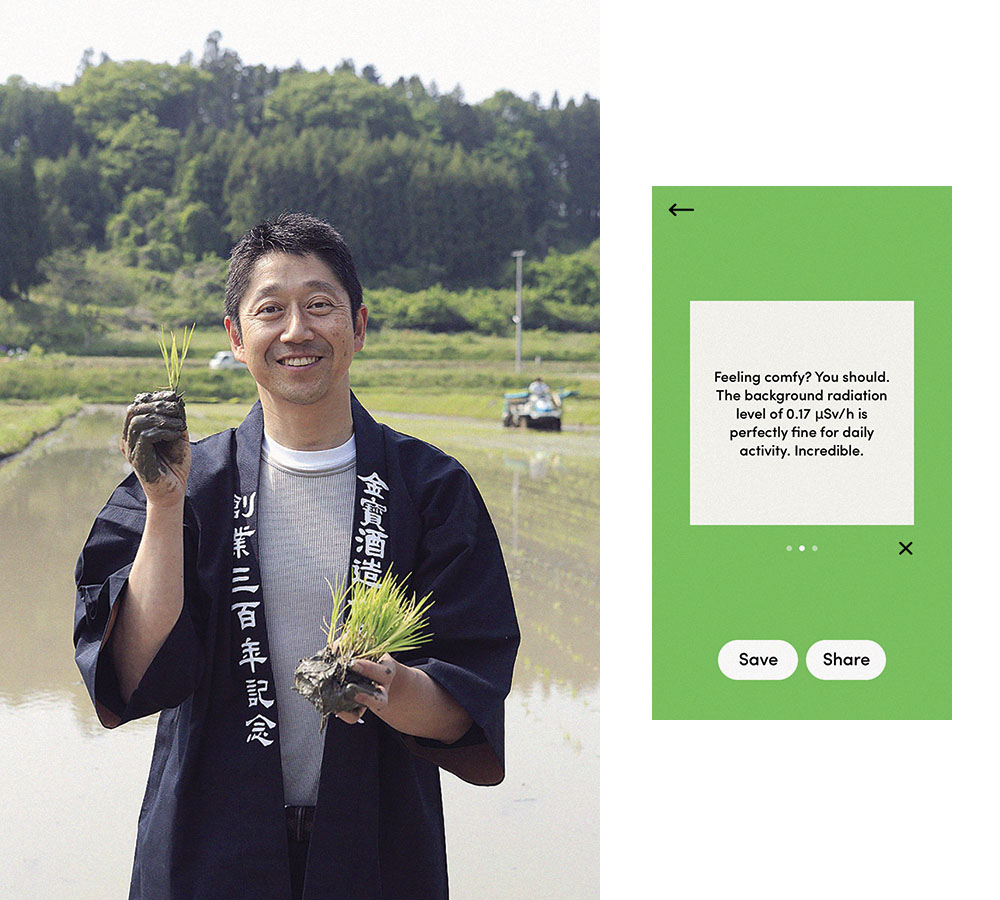

上/Top : Niida Honke酒廠的主釀酒師Yasuhiko Niida。/Niida Honke Brewery master brewer Yasuhiko Niida
下/Below : 作者Johannes Pong在Kitakata的清酒稻田。/Writer Johannes Pong in Kitakata’s sake rice fields
除了福島農業技術中心的監測和研究,各自清酒釀造廠都對所用的水和米進行獨立自家測試,務求釀製出最精緻的清酒。
從產量和質量上說,福島是清酒的第八大生產地,並且是國家業內最德高望重的日本「全國新酒鑑評會」中奪得最多金牌數目的縣府。那兒的清酒連續三年獨佔該獎賞的鰲頭,原因不是憐憫當地慘遭海嘯蹂躪,也不是因為幕後操控,而是福島的清酒實至名歸。
清酒大賞這個著名的行業盛會共邀請24位評委品嘗來自全國各地的400種清酒,評委彼此不許互相談論,只能坐著喝一口吐一口,然後為所試的清酒給予號碼:一是最好,五是最壞。這種方式極具日本風,既殘酷又簡單。被選中的清酒進入第二輪,而最終只會選出首三名,其中百分之二十至二十五的會得到黃金標籤。
典型的福島清酒是清新的吟釀。酒身微甜味,精緻不凡,卻鮮味極濃,皆因福島有好米和軟水,宜人氣候又適合酒精發酵。無論是災難發生前後,一眾釀酒大師彼此絕不吝嗇交流知識。話說回頭,2011年,65家啤酒廠中委實有51家曾遭當年海嘯襲擊。誠然,互相扶持是少不了的。
在會津若松,我們參觀了福島的末廣嘉永蔵。這個古老的木建築於1850年嘉永年代成立,隨即發明了著名的山廢釀酒方法,即使用天然酵母或乳酸菌創造更鮮更醇的清酒口感。如今,他們釀酒時仍然棄用現代機械,全部皆為由心出發的手工製作。
釀酒大師佐藤壽一先生打從昭和三十五年(即1960年)開始釀酒,至今從沒退隱之意。末廣酒蔵老板娘笑説佐藤大師在世界各地都有很多粉絲,而酒瓶上更有其照片,所以難於退下火線。
在那位80歲釀酒大師的指導下,用傳統方式手工製酒是一項艱辛卻極其光榮的工作:在巨大的鐵鍋裡先把米蒸煮,然後以高溫使米變乾,當中的水分卻有助冷卻。冷卻過程每天不同,皆取決於當天的溫度以及米的批次。最後將麴菌用手撒在蒸過的米糰上有待發酵。刻下,末廣的其他酒廠都以現代機器生產,務求有足夠數量的清酒出口外國,而我這次與佐藤先生釀製的是真正的手釀清酒,只在他們的禮品店出售,誠然是獨一無二的工藝極致。
有興趣之讀者可到 Instagram #JohannesinFukushima 瀏覽更多照片。
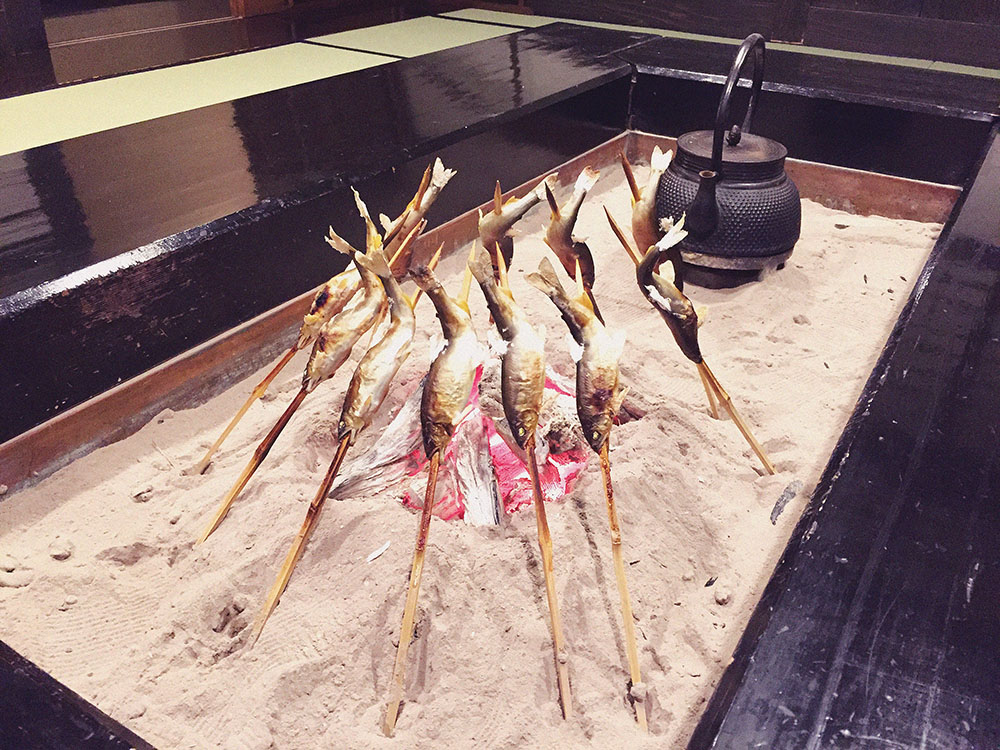
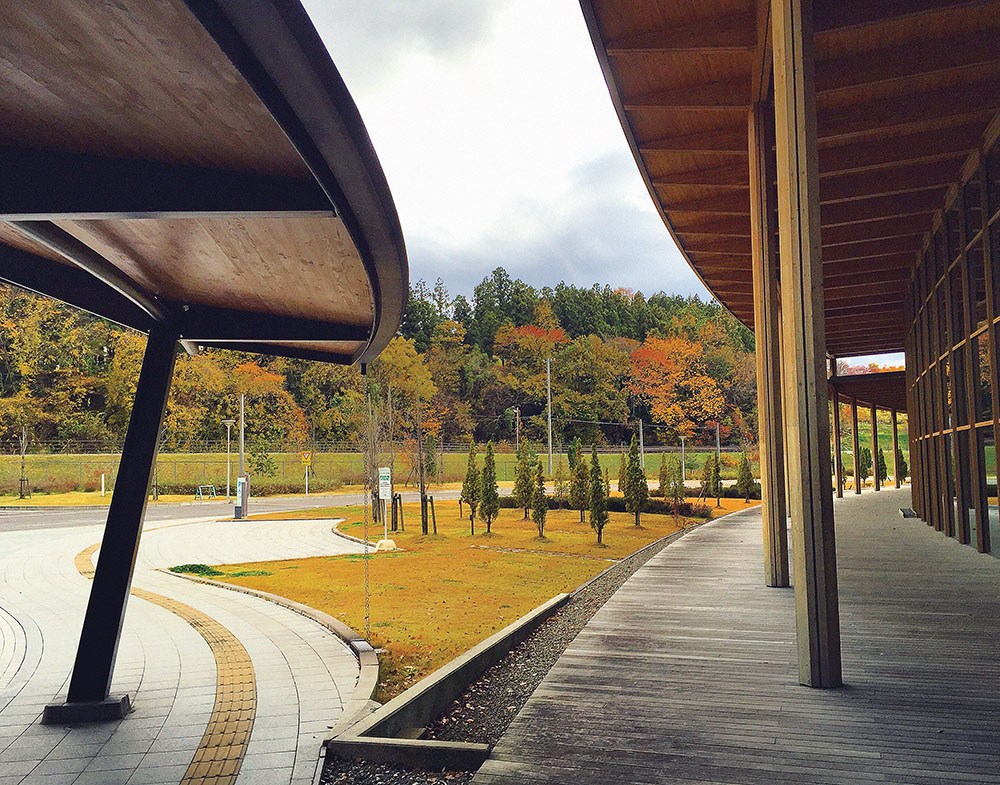
上/Top : 在Tagoto烤甜美的河魚。/Grilling sweet river fish at Tagoto
下/Below : 位於Koriyama的農業技術中心。/Agricultural Technology Center in Koriyama
When I told friends that I was going to check out traditional saké breweries in Fukushima, feedback was genuine shock as well as concern. And then jokes about growing third eyes and extra limbs and suggestions of wearing lead underwear.
There’s too much myth, misinformation and fear-mongering lies regarding Fukushima since the earthquake, tsunami and subsequent Daiichi Nuclear Plant hot mess. But radiation is actually easily detected by science. You can’t cover it up, nor exaggerate its presence.
I downloaded the Lapka app onto my iPhone and borrowed a sleek Lapka PEM device from a slightly OCD French friend in Hong Kong. He had purchased the gadget when he thought the Daiichi disaster meant that all of Asia was awash with deadly radioactive waves.
Lapka, recently acquired by Airbnb, is a tiny environmental monitor that connects to your smartphone. Its precise sensors respond to the world of ions and molecules invisible to our naked eye. One program measures and analyses the background radiation levels of our immediate surroundings.
Before flying off to Japan, I tested the Lapka device everywhere in Hong Kong. It was rather disheartening to realise that the Mandarin Oriental’s basement bar has higher background radiation levels than Tokyo. The Japanese capital, incidentally, has higher levels than Fukushima.
When I got to Fukushima, the Lapka app assured me that there was no radioactivity anywhere near me. Of course I wasn’t right where Daiichi was melting. The coastal area is indeed still reeling from the shock of the nuclear disaster, and fishing has been arrested. Fukushima prefecture is actually a vast land, separated into three different topological region, with different climates, cultures and languages.
I checked on the train, in Fukushima’s Koriyama city, the town of Aizu-Wakamatsu and the farms in the Kitakata area. The background radiation levels in those areas (0.17) were consistently lower than that of Hong Kong (0.20 – 0.21). A metropolis like HK, Shanghai or Tokyo with all that granite and concrete actually traps way more radiation than a rural area like Fukushima.
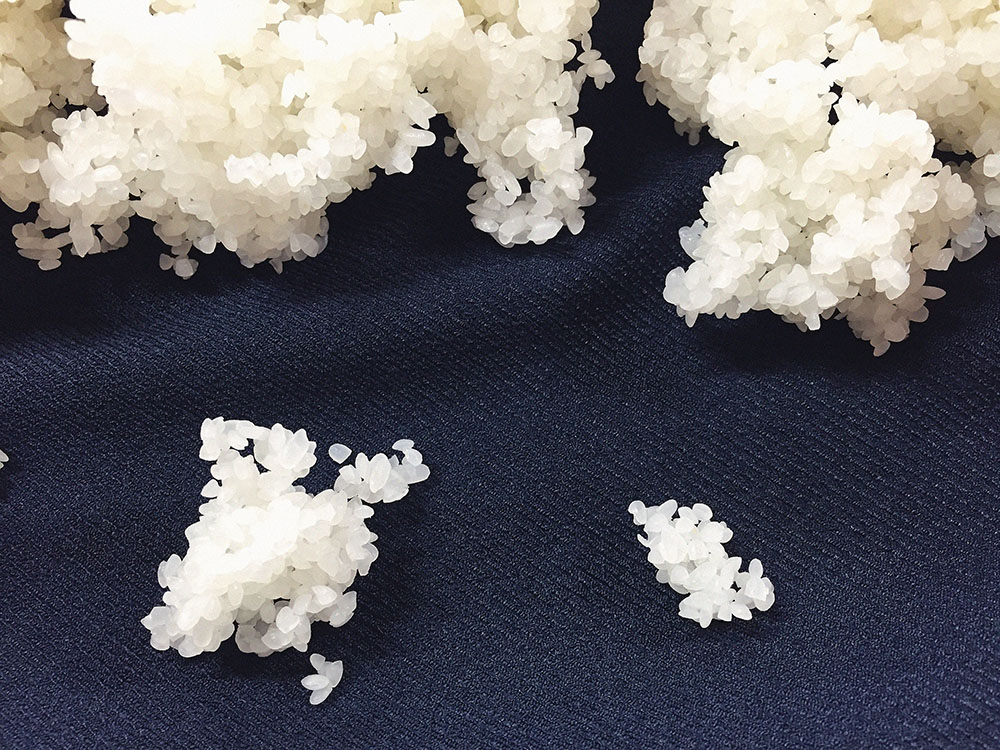
在Daishichi酒廠準備著做清酒的米。/Prepping the sake rice at Daishichi Brewery
Separating the coast from the fertile basin and rice bowl of Aizu-Wakamatsu and Kitakata is Koriyama, a hilly region. The distance from where saké rice is grown in Aizu-Wakamatsu and Kitakata is as far as Mount Fuji is from Tokyo. What about sashimi you ask? Those areas never ate much fresh fish to begin with. Neither did the old landlocked imperial capital Kyoto, for the matter. Local sashimi in Aizu-Wakamatsu is raw horse, mixed with a spicy miso. Or a vegetarian version made of yuba — soft tofu skin — as they did in classy Kyoto as well. A number of dishes utilise dried scallop to impart that seafood umami, just like how Cantonese cuisine does.
The evening before taking the Shinkansen up, I interviewed some fellow journalists at the Foreign Correspondents’ Club of Japan in Tokyo. Those who have actually been to Fukushima all gave glowing (please excuse the pun) reviews of the place. Politics are often involved when it comes to information about Fukushima, as any small town would have.
Niida Honke in the city of Tamura (more like a village; bus service stops at 6pm) was the first sake brewery we checked out. Yasuhiko Niida is the 18th generation tōji (master brewer) of his family’s brewery, founded in 1711. It’s just him and his staff of 22 in charge of planting and harvesting the rice, plus the whole saké making process. And he’s mighty proud of his artisanal product.
Upon entering the brewery, I witnessed a young staff member meticulously raking the rice grains after sprinkling koji mould on them. The bacteria is Japan’s “national fungi” — different strains flavour everything from soy sauce to miso to alcohol. The meditative, repetitive motions may have inspired the raked Zen sand gardens, as Japanese temples used to produce their own saké, just as European monasteries brewed beer and wine.
“In the past, rice and saké were viewed as gifts from the gods. We’re inspired to honour that tradition and to take care of the fields and make saké the way it should be made.”
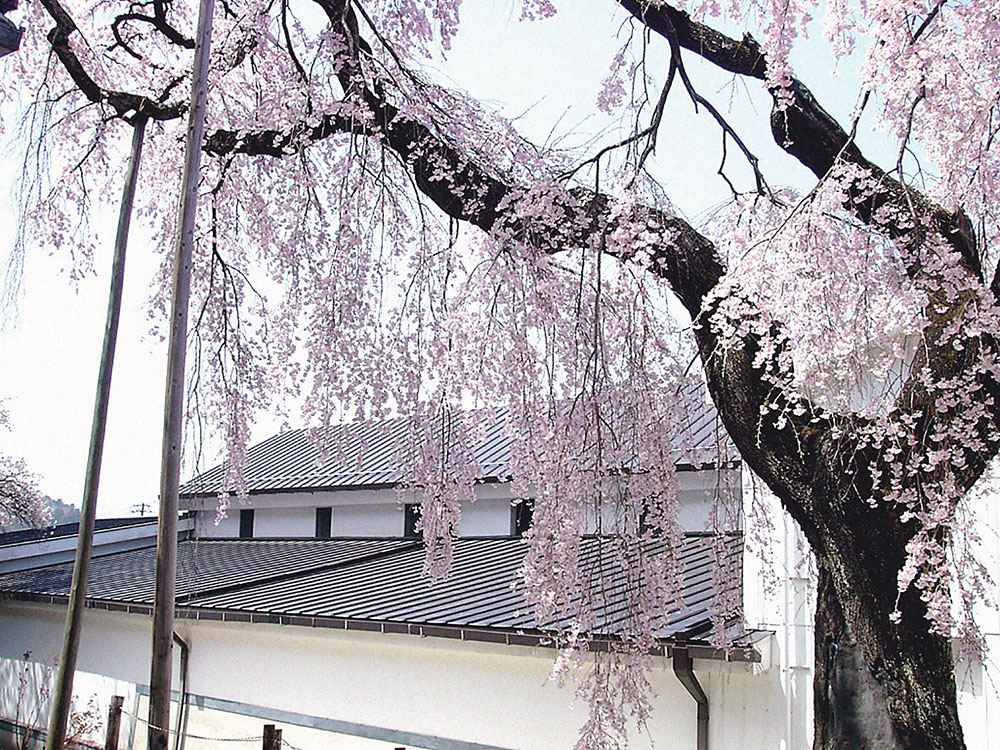
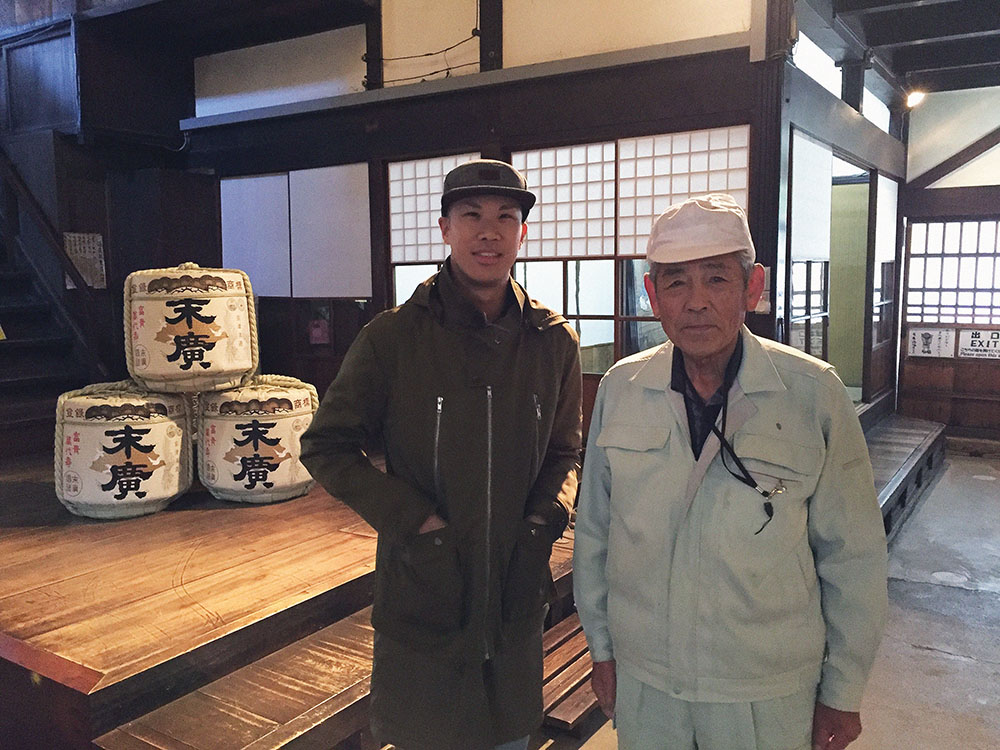
上/Top : 福島的景色。/Fukushima landscape
下/Bottom : Johannes Pong 和 Suehiro酒廠的主釀酒師。/ Johannes Pong with Suehiro’s master brewer Juichi Sato
In 2011, Niida Honke’s tricentennial anniversary, they started planting organic saké rice to produce fuller, softer sakés. Although it’s 1.5 times more expensive than regular saké rice, Niida’s dream is to have all the farms in Tamura be 100 percent organic and self-sustainable by 2025. “So that the soil will be healed in 100 years, and we can be proud of our land,” explained Niida.
Right now, 95 percent of the rice is grown without pesticides or chemical fertilisers, and their sakés are labeled as shizen (natural), munouyaku (pesticide-free) or teinouyaku (low-pesticide). “I raise my two daughters right here. I wouldn’t make anything that I cannot feed them,” said Niida.
All Fukushima breweries test their water, rice, saké and saké lees for radioactivity. No test result ever exceeded 10 becquerels per kilogram. That means they’ve never detected any radioactive contamination in saké. Ever. Or any other product that got to leave the prefecture for the matter.
The gorgeous Fukushima Agricultural Technology Center in Koriyama, the largest city in the prefecture, is the size of 12 Tokyo Domes. It’s spotlessly clean but doesn’t feel overly sterile, thanks to its soothing warm woods and clean lines. Here, they sample, monitor and test all of the prefecture’s food products for radioactive contamination. Every bag of rice, vegetable or fruit grown in the prefecture, every single animal slaughtered in the prefecture undergoes rigorous screening, with standards far stricter than those in the U.S. or the E.U. Seems excessive but we’re impressed.
A Fukushima local probably eats way healthier than your regular Joe from Jersey, Tokyo or Hong Kong. Besides chefs and food writers, who even knows or cares where their food and drink actually comes from nowadays? Fukushima does. They have no choice. They don’t want to die.
In addition to the monitoring and research done at the FATC, the saké breweries all do their own independent testing on the water and rice they use, crucial elements to make a fine saké.
Fukushima is the eighth largest saké producer in terms of quantity and production volume. What’s more impressive is that the prefecture ranks the highest in number of gold medals of The Japan Sake Awards. A trite name in English, but it’s the most prestigious industry event in the country.
For three consecutive years, Fukushima sakes have constantly dominated the Awards. It’s not a pity prize awarded to the poor prefecture that got hit by a tsunami, and it’s not a rigged competition.
The event goes something like this: 24 judges tasting 400 sakés from all over the country. There’s zero talking or commenting. Judges simply sit, sip and spit, and the saké is awarded a number: one for the best, five for the worst — brutally minimal, utterly Japanese. The top sakés go again for a second round, awarded from only one to three. 20 to 25% gets a gold label. Fukushima ones consistently get ranked up there.
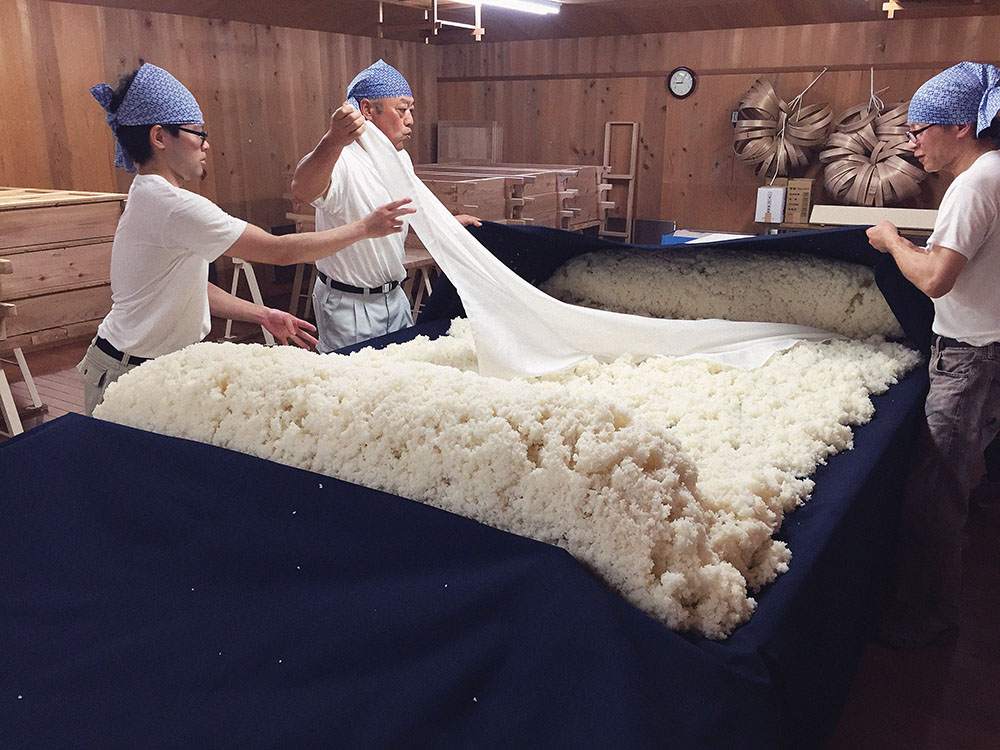
在Daishichi酒廠準備著做清酒的米。/Prepping the sake rice at Daishichi Brewery
Typical Fukushima sakés are clean ginjōs (40 percent of rice is polished away, and a smidgeon of distilled alcohol is added to fortify it). They exhibit a light sweetness, very refined but with a deep umami. This is because Fukushima has good rice, soft water, plus an ideal climate for the fermentation process. The master brewers who know each other are also not stingy with sharing their knowledge, even before the disaster struck. 51 breweries out of 65 were impacted by the 2011 tsunami. Of course they are going to help each other out.
In Aizu-Wakamatsu, we visited a venerable old building of wood. Fukushima’s Suehiro’s Kaei Brewery, established in 1850 during the Kaei era, is where they developed the famed Yamahai method (using naturally occurring yeast or lactic bacteria that drops naturally from the rafters to create a richer, umami-laden saké). They still brew saké without modern machinery, all by hand and heart.
Master brewer Juichi Sato began making saké in the 35th year of the reign of Showa (1960) and does not care to stop. The owner’s wife chimes in, saying Sato has a multitude of fans all over the world (as his photo is on most of the bottles), so he can’t quit.
It’s hard work but also an honour to make saké under the 80-year-old master brewer’s guidance. Rice is steamed in gigantic iron pots. The high heat makes it dry, but moisture is contained within the grain. The texture isn’t like completely cooked rice, but like clay, with grains still intact. I lugged hot steaming rice in wooden barrels over my shoulders to a sheet spread out on the floor. We spread out the clumps of rice for it to cool. This cooling process differs everyday, depending on the day’s temperature, as well as whether it’s the first, second or third batch of rice. Koji mould is then sprinkled onto the clumps of rice by hand. The other Suehiro brewery is a modern facility that is able to produce enough saké for export. The saké I produced with Master Sato is only brewed and sold in their gift shop, truly an artisanal work of art.
Check out #JohannesinFukushima on Instagram for more pictures
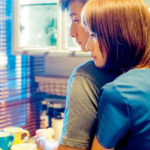

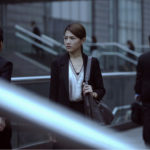
Awesome post.|